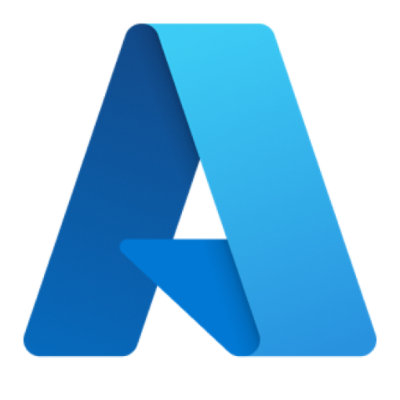Global financial services company Fiserv wanted to help its financial institution clients modernize and transform their payment processing infrastructure. As part of its continual product enhancement, Fiserv extended its Enterprise Payments Platform solution to the cloud on Microsoft Azure. The resulting solution provides modern real-time payment processing, simplifying payment operations and reducing costs for financial institutions. Enterprise Payments Platform also delivers data insights, so banks can provide their clients with visibility into their financial health.


There was a time when financial institutions kept “bankers’ hours,” traditionally opening to the public at 10∶00 AM and closing at 3∶00 PM. But in a global, digital setting, those days are long gone. “In this digital environment, the bank meets the client 24/7/365, and uses technology to do it,” says Laura Clary, Fiserv’s Vice President of Product Management for Enterprise Payments Solutions.
With over $16 billion in annual revenue, Fiserv—headquartered in Brookfield, Wisconsin—is one of the largest financial services organizations in the world. The company provides technology solutions used to move money and information worldwide for financial institutions, businesses, and consumers.
Modernizing payment processing to add value for clients
Financial institution customers haven’t always expected all-day service. Before the prevalence of always-on access to financial apps and services, financial institutions were nine-to-five enterprises. Payment processing—requiring multiple layers of validation and security checks—took days. It was only in 2008 that the United Kingdom introduced the Faster Payments Service, enabling real-time transfers throughout the UK banking sector.
Given the reliance of traditional financial institutions on in-house, manual payment processing and on-premises data servers, evolution took time. The advent of modern payment systems and cloud-based financial services firms changed everything. With the cloud, financial institutions could accelerate the outsourcing of payment systems that were not core to their business models. A host of new solutions appeared and advanced the horizon of opportunity for financial services.
Industry consolidation and the need to reduce costs in payments led many financial institutions to seek innovative solutions. The Fiserv team knew it had to help its financial institution clients modernize, and that meant a move to the cloud was in order for its Enterprise Payments Platform.
Extending a payment solution on Azure
Other cloud and managed service providers also offer payment processing services, but for Fiserv, extending its financial services platform on Microsoft Azure was a strategic choice.
“We use a suite of Microsoft products,” says Clint Myers, Senior Vice President of IT for Commercial, Treasury, and Risk Management Solutions at Fiserv. “As we upgrade from one database version to the next, we always start with Microsoft to ensure we’re taking advantage of new capabilities. It was only natural that when we switched to a cloud environment, we also relied heavily on Microsoft.”
What emerged from the collaboration between Fiserv and Microsoft is the latest iteration of the Enterprise Payments Platform, a cloud-based global payment processing solution. The Enterprise Payments Platform benefits from the complementary expertise of both organizations: Fiserv as a worldwide expert in financial payment processing and Microsoft as a provider of compliance and security solutions in the Azure cloud.
Reaping the benefits of a simplified platform
Historically, financial organizations have maintained on-premises datacenters. To meet industry standards, each needed four or five separate payment processing systems, one for each payment type. For example, one system might handle low-value or automated clearing house payments; one would handle wire or high-value transfers; another would manage international SWIFT payments; and yet another would tackle real-time or instant payments.
“All these different platforms require different teams, build cycles, and release schedules,” says Matt Wilcox, President, Digital Payment Solutions at Fiserv. “So there is major complexity and extra cost associated there.”
Financial institutions that deploy the Enterprise Payments Platform see multiple benefits, including the simplification of operations and cost savings. “The platform facilitates the unification of multiple clearing and payment types,” says Wilcox.
The Enterprise Payments Platform consolidates payment systems into one solution. With simplification come both risk reduction and cost savings. Fiserv estimates up to a 50 percent reduction in ownership costs over the life of the product.
Banking on the reliability and global compliance of Azure
Another benefit of extending the Enterprise Payments Platform on Azure is reliability—a capability that is legally mandated for financial institutions. “Payments are the lifeblood of any financial institution, and resilience is key to any payment system,” says Wilcox. “Using Azure, we can provide assurances that these systems will operate every day, without concern.”
“Globally, we have many clients; however, our first cloud-based Enterprise Payments Platform client in the United Kingdom will see significant cost and operational benefits by consolidating the processing of its SWIFT, CHAPS, Faster Payments Service, and Bacs transactions on one system, including sanctions screening and liquidity management,” says Rossana Thomas, Head of Enterprise Payments Platform in Europe, the Middle East, and Africa for Fiserv.
Facilitating differentiation through advanced information and personalization services
From the client’s perspective, financial institutions can struggle to differentiate their services, making it hard for banks to attract the ideal business customers. That’s why Fiserv built advanced automation and information processing into the Enterprise Payments Platform. The platform simultaneously lowers financial institutions’ operating costs and offers improved services, such as real-time visibility into every stage of payment clearance and processing.
“What the market wants now is not just payments but also information,” says Clary. That capability is available with the launch of ISO 20022—a new international standard that governs the way data is identified and processed for payments. Using this standard, financial institution clients and their customers can learn what a given payment is for and where it originated. Moreover, the Enterprise Payments Platform is ISO 20022 native, so the financial institution clients that adopt it can take advantage of data-rich payments over multiple schemes.
Modernizing payment systems to prepare for the future
Changing a financial institution’s payment processing system is a big deal. Traditionally, systems only change about once every 25 years. The Fiserv model is to serve as a trusted partner to help clients upgrade. Whereas the typical project for a financial institution might take three to four years, an average migration with the Fiserv Enterprise Payments Platform takes about 12 months.
“Some of our financial institutions have multiple entities and positions across multiple geographies,” says Thomas. “In those cases, it’s a multiphase project. We start with a project definition study that gathers all stakeholder leaders to ask questions such as ‘Where’s your biggest position?,’ ‘What’s your biggest pain point?,’ and ‘Are you trying to address a particular market?’ From there, we recommend a series of strategic rollouts.”
“The number one ingredient sought is an advisory partner with expertise on how this kind of transformational change happens,” says Thomas. “And that’s what we’re good at. We help financial institutions optimize their deployments based on their risk management profiles, business priorities, and return-on-investment goals. The industry term is progressive transformation.”
Alongside the rollout of ISO 20022, the Enterprise Payments Platform team supports clients adopting cloud capabilities so that they can be ready for the future. It’s possible that mainframes and even legacy software might not be compatible with the emerging standards, and some software is so outdated it’s no longer worth investing in. Plus, as the Enterprise Payments Platform product team looks to the future, it sees additional trends and regulations coming. “Concepts about real-time settlement, the interoperability of payment systems globally, and—more importantly—information management: those will be important for the industry going forward,” Clary says.
“We use a suite of Microsoft products. As we upgrade from one database version to the next, we always start with Microsoft to ensure we’re taking advantage of new capabilities. It was only natural that when we switched to a cloud environment, we also relied heavily on Microsoft.”
Clint Myers, Senior Vice President of IT for Commercial, Treasury, and Risk Management Solutions, Fiserv
Explore related stories
Fuel innovation with Microsoft

Talk to an expert about custom solutions






Follow Microsoft